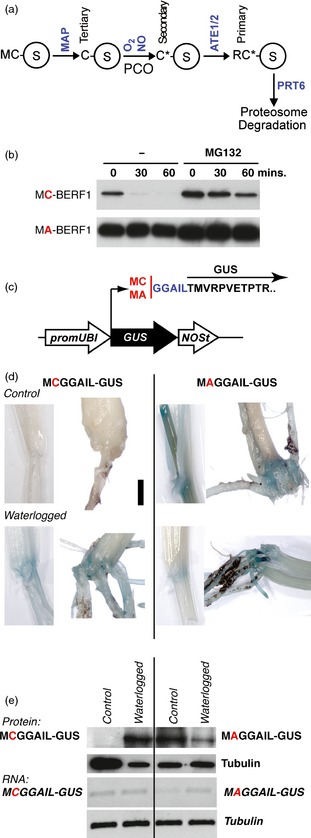Figure 1.

Amino terminal cysteine controls protein stability in barley. (a) The Cys‐Arg/N‐end rule pathway. Amino acids are indicated by single letters; C*, oxidized cysteine; MAP, methionine aminopeptidase; NO, nitric oxide; ATE, arginyl tRNA transferase; PRT6 E3, ligase PROTEOLYSIS6; and PCO, plant cysteine oxidase. Circled S indicates substrate proteins. Tertiary, secondary and primary Nt‐destabilizing residues are indicated. (b) α‐HA Western blot analysis of the in vitro stability of HA‐tagged wild‐type and Ala2 variants of barley ERF1 (BERF1) in the absence or presence of MG132 following treatment with 100 μm cycloheximide at time point 0. Equal loading was confirmed by ponceau staining (data not shown). (c) Diagrammatical representation of the M(C/A)GGAIL‐GUS reporter construct used to analyse substrate stability in vivo in response to waterlogging. (d) Histochemical staining for GUS activity in transgenic barley leaf and root tissue following growth under well‐drained or waterlogged conditions for 15 days. In waterlogged conditions, the analysed tissue was submerged. (e) α‐GUS Western blot analysis of M(C/A)GGAIL‐GUS reporter and tubulin protein stability in response to waterlogging. Expression of RNA via semi‐quantitative rtPCR showing no change in GUS RNA expression in MC‐ or MA‐ constructs in response to waterlogging.
